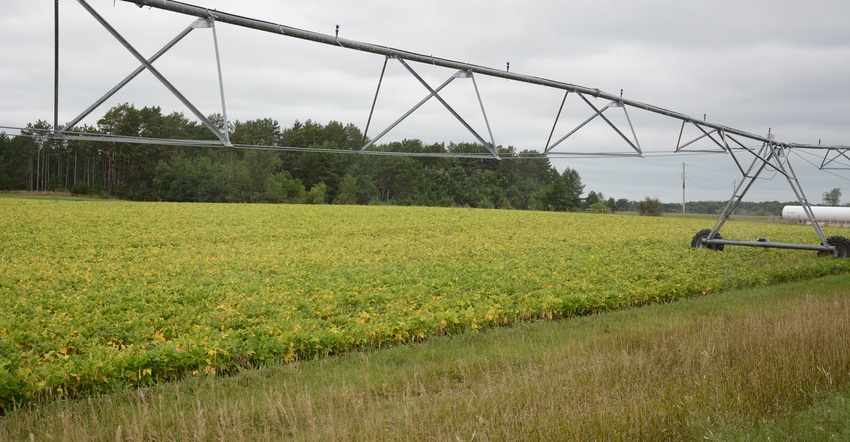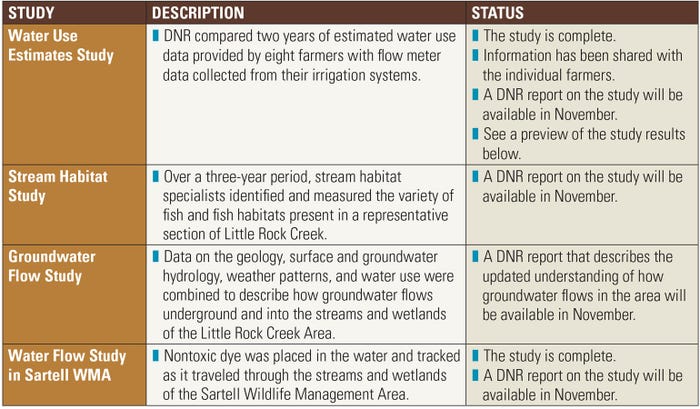September 30, 2020

The Minnesota Department of Natural Resources has been working with eight farmers in the Little Rock Creek region to monitor water use and its impact on aquatic habitat.
The Little Rock Creek Area Action Plan has helped both parties understand differences between reported water use and measured water use.
Using tools to analyze fish habitat and long-term data, DNR staff say they have improved the reliability of the model that describes the way groundwater flows underground in the Little Rock Creek Area.
Using dye tracers, they also studied the way surface water flows through the Sartell Wildlife Management Area.
Four studies in the plan are providing information that will help groundwater users, the DNR and other interested individuals ensure that groundwater resources remain available and usable for present and future generations, the DNR says.
Summaries of the four studies are:

Preliminary results
Farmers in Minnesota who use groundwater for irrigation are required to report their annual water use to the DNR. Most farmers use estimating methods to calculate their water use, rather than directly measuring it using flow meters on their irrigation systems. For many years, not much was known about the potential differences between measured and estimated methods for calculating water use.
Eight farmers in the Little Rock Creek Area volunteered to participate in this Water Use Estimates Study. The study compared these eight farmers’ estimates of water use with actual flow meter data from their irrigation systems.
Here are a few results:
Several farmers overestimated their water use, on average by 24% in 2019.
A couple of farmers underestimated their water use.
Several farmers reported their water use very close to the measured use — within 10%.
This study has helped DNR and farmers collectively understand differences between measured use and estimated use. It appears that the differences are primarily due to a well pump’s actual capacity versus its rated capacity. The DNR is compiling the full results of this study and will make them available to the public in November.
Looking ahead
The Little Rock Creek Area Action Plan team will be sponsoring a public discussion of these studies and the action plan’s next steps in January. The meeting may be an online event.
For more information on the action plan, contact Mark Hauck at the DNR at 320-223-7846 or [email protected]. For more information on the Little Rock Creek Area Action Plan, visit the DNR website. You can also find more information on DNR’s groundwater management programs.
Source: Minnesota Department of Natural Resources, which is solely responsible for the information provided and is wholly owned by the source. Informa Business Media and all of its subsidiaries are not responsible for any of the content contained in this information asset.
You May Also Like




